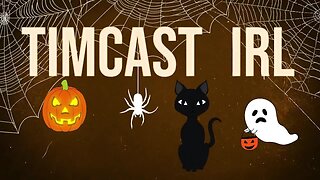Premium Only Content

The use of sodium in dog and cat food.
The use of sodium in dog and cat food.
Sodium is an essential mineral in the diet of dogs and cats. Compared to humans, animals have a much higher tolerance for this nutrient. Learn about some of the benefits of sodium in pet diets, and understand one of the biggest myths about small animal nutrition.
In human medicine, it is common to restrict and worry about the use of sodium in food, and to avoid sausages and other foods to control mainly blood pressure and care with cardiac and renal alterations. Thus, some myths related to the use of sodium in pet food have arisen due to the close relationship between man and animal.
Sodium in pet food is extremely important for optimal health, and the amount of this macroelement in the diet is considerably higher and not harmful as it would be in humans. The conventional industrialized foods (pet food) are balanced and formulated according to the needs of each stage of life, following the nutritional recommendations described by the NRC (National Research Council of the US National Academy of Sciences), FEDIAF (European Pet Food Industry Federation) and Abinpet (Brazilian Pet Products Industry Association), and the non-conventional diets, such as the homemade diet when well formulated and prescribed, also do not bring risks regarding the amount of sodium in the diet. The big problem is when offering non-balanced diets and not properly formulated, where the sodium level and other macro and micro elements may be unbalanced, generating several complications to the animals.
Dogs and cats tolerate relatively higher amounts of sodium in diets, according to data from FEDIAF 2018, a nutritional guideline widely respected and followed by nutrological veterinary physicians. Studies show that 0.19g/1000 kcal of metabolizable energy is adequate for dogs at all life stages, while healthy cats tolerate contents of up to 3.75 g/1000 kcal. Higher values may still be safe, but no studies exist. For growing dogs and cats, these levels may be higher, due to nutritional requirements in the puppy growth phase. So, if we look at the basic composition of puppy food, the sodium level will always be higher than for an adult or senior animal.
Sodium is part of several systems in the animal's body, being responsible, for example, for the acid-base balance and for the utilization of glucose, which is the source of energy for the cells and for the animals
-
 LIVE
LIVE
Spartan
16 hours agoFirst playthrough of First Berserker Khazan
107 watching -
 LIVE
LIVE
Phyxicx
11 hours agoHappy Halloween! Scary game Visage! Then Waifu Dungeon! - 10/31/2025
587 watching -
 49:47
49:47
Brad Owen Poker
20 hours agoI Get My First BIIGGG Win! $25,000+ Buy-in! HORSE Championship! Don’t Miss! Poker Vlog Ep 324
3.39K1 -
 5:14:08
5:14:08
BBQPenguin_
5 hours agoARC RAIDERS LIVE: High-Stakes Extraction & PvPvE! (First Run)
8501 -
 9:53
9:53
Rethinking the Dollar
20 hours agoWhen Detroit Bleeds, America Suffer! Layoffs Have Begun
6.12K6 -
 18:36
18:36
Clownfish TV
23 hours agoYouTube Just NERFED YouTube Gaming... | Clownfish TV
2.43K12 -
 10:26
10:26
Silver Dragons
17 hours agoSilver is TAKING OFF Around the World
2.51K3 -
 1:36
1:36
From Zero → Viral with AI
1 day agoAI in Content Creation & Discovery – The New Era of Marketing
1.3K -
 1:20:10
1:20:10
FreshandFit
11 hours agoMiami Halloween Street Debate
204K100 -
 2:06:16
2:06:16
TimcastIRL
14 hours agoTrump Calls For NUCLEAR OPTION, END Filibuster Over Food Stamp Crisis | Timcast IRL
216K177